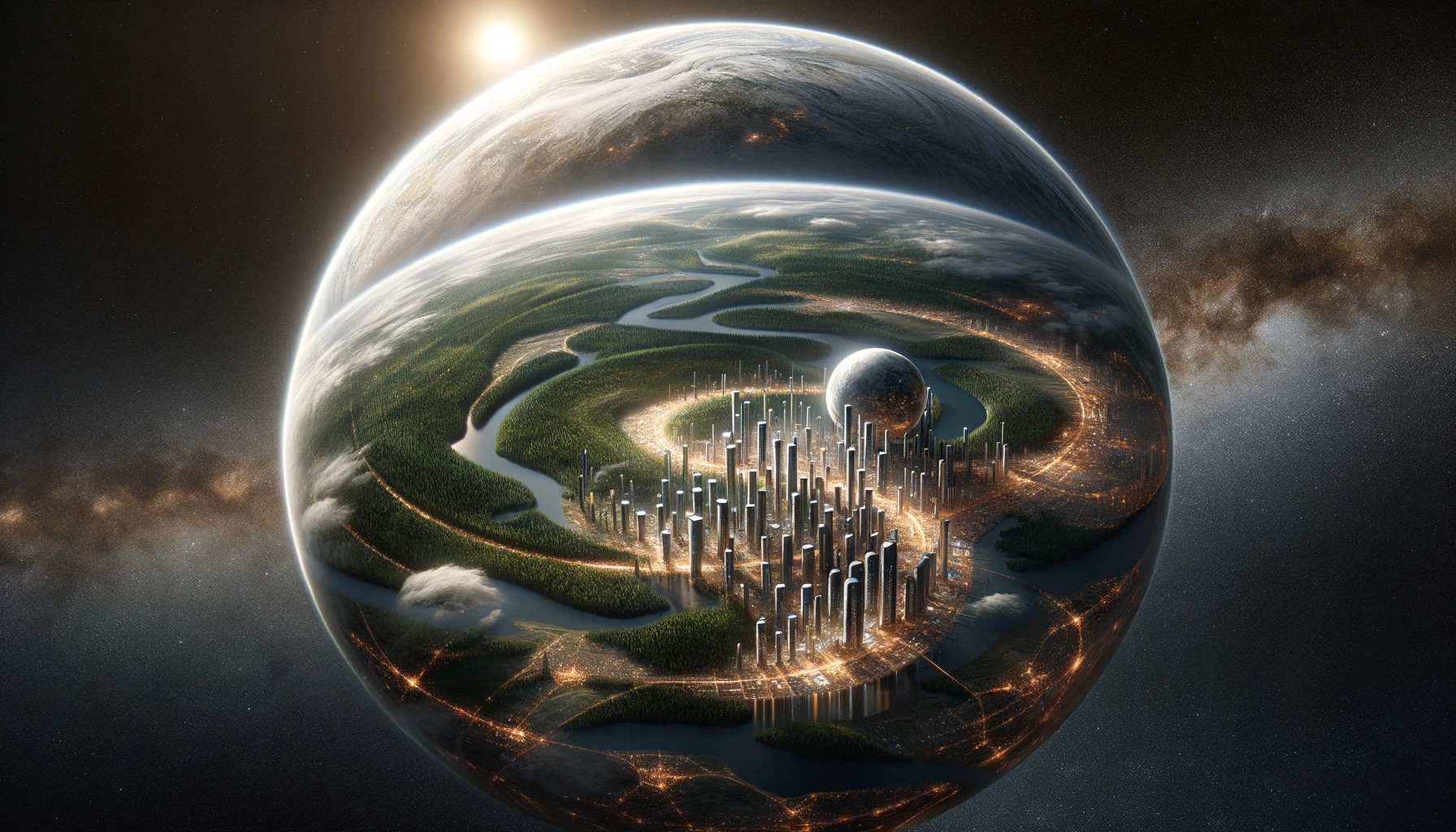In the annals of scientific imagination, few ideas capture the grandeur of human ingenuity like the Dyson Sphere. This concept, a testament to the visionary ideas of physicist and mathematician Freeman Dyson, stands at the intersection of astrophysics, engineering, and science fiction. Dyson, a British-American thinker, has had a profound influence in various fields of theoretical physics, but it is his contemplation of advanced space structures that has sparked widespread fascination and debate.
Freeman Dyson: The Man and His Legacy
Born in 1923 in England, Freeman Dyson exhibited an early affinity for mathematics and science. He made significant contributions in the fields of quantum electrodynamics and solid-state physics, among others. Dyson’s work was characterized by a unique combination of deep scientific insight and a broad, imaginative approach to problem-solving. His ability to blend the practical with the speculative made him a revered figure in scientific circles.
Before his death in 2020 he was outspoken about man-made carbon emissions, explaining that the Earth is in a ‘carbon drought’ in contrast to the current political hype surrounding climate change.
The Dyson Sphere: A Galactic Scale Vision
The concept of the Dyson Sphere emerged from a 1960 paper by Dyson titled “Search for Artificial Stellar Sources of Infrared Radiation,” published in the journal ‘Science’. Dyson speculated that an advanced civilization would eventually outgrow its planet’s energy supply and look to its star for energy. He proposed that such a civilization might construct a vast shell or series of rings encircling the star to capture a significant portion of its energy output. The idea was not about a solid shell but rather a swarm of orbiting structures, collectively harvesting the energy of the star.
Engineering and Challenges of the Dyson Sphere
The engineering challenges of building a Dyson Sphere are immense. It would require materials able to withstand extreme heat and radiation, solving complex issues of energy management and heat dissipation. The sheer scale of the structure, encompassing an entire star, would necessitate an astronomical amount of material, far beyond current capabilities. Moreover, the gravitational and orbital mechanics of maintaining such a structure pose additional significant challenges.
The Dyson Swarm: A More Feasible Alternative
In light of the practical challenges associated with a continuous Dyson Sphere, the concept has evolved into what is now known as the Dyson Swarm. This idea involves a multitude of individual solar collectors or habitats orbiting the star in a dense formation. Each unit would capture a portion of the star’s energy, collectively amounting to a significant harvest. The Dyson Swarm is considered more feasible as it does not require a continuous structure and allows for gradual construction over time.
Life within a Dyson Swarm
In a civilization thriving within a Dyson Swarm, life would be fundamentally different from that on Earth, defined by unique societal, technological, and environmental characteristics. Each unit in the swarm, potentially a space habitat or solar energy collector, would be a microcosm of civilization, interconnected with others through advanced communication and transportation systems. These habitats could mimic Earth-like conditions or offer entirely new living environments, leveraging artificial gravity and life support systems. The energy harvested from the star would be used not only for sustaining life and habitats but also for powering sophisticated technologies, such as advanced manufacturing, recycling systems, and possibly even propulsion systems for moving habitats within the swarm. The society would likely be highly technological, with an economy based on energy management, space-based resources, and digital or virtual systems. Governance in such a dispersed yet interconnected environment might lean towards a decentralized model, with each habitat or cluster of habitats managing their affairs while participating in a broader, swarm-wide cooperative framework. Cultural and scientific endeavours would flourish, driven by the diverse experiences of living in space and the vast opportunities for exploration and discovery presented by the surrounding cosmos. In essence, a civilization within a Dyson Swarm would represent a harmonious blend of advanced technology, sustainable living, and a deep connection to the cosmos, embodying humanity’s potential to adapt and thrive in space.
A Dyson Swarm habitat
In a Dyson Swarm habitat, recreating nature in the form of forests and streams would involve sophisticated ecological engineering to mimic Earth’s environments. These habitats, designed with large, enclosed biospheres, would utilise advanced climate control systems to replicate Earth-like conditions, including temperature, humidity, and atmospheric composition. By using the sun to regulate lighting cycles, possibly simulating the sun’s spectrum, it would be possible to support photosynthesis for a variety of plant life, allowing the growth of lush forests. Water recycling and purification systems would create and maintain streams, rivers, and possibly even small lakes, ensuring a continuous water cycle within the habitat. The introduction of soil and terrestrial organisms would create a balanced ecosystem, with careful management to maintain ecological stability. Gravity, essential for the natural flow of water and growth of trees, could be simulated through rotation or other artificial means. These man-made forests and water bodies would not only provide a natural and serene living environment for the inhabitants but also play a crucial role in air purification and the psychological well-being of residents, creating a tangible connection to the Earth they left behind. This integration of technology and nature in space habitats would be a remarkable example of human ingenuity in creating self-sustaining ecosystems beyond Earth.
Conclusion:
The legacy of Freeman Dyson is not just in his specific scientific contributions but in the way he has inspired generations to think beyond conventional limits. The Dyson Sphere and its more practical variant, the Dyson Swarm, serve as testaments to human imagination and our quest for understanding and utilizing the cosmos. While the construction of such structures remains a distant dream, they continue to inspire scientific and technological advancements that edge us closer to becoming a more advanced civilization.
